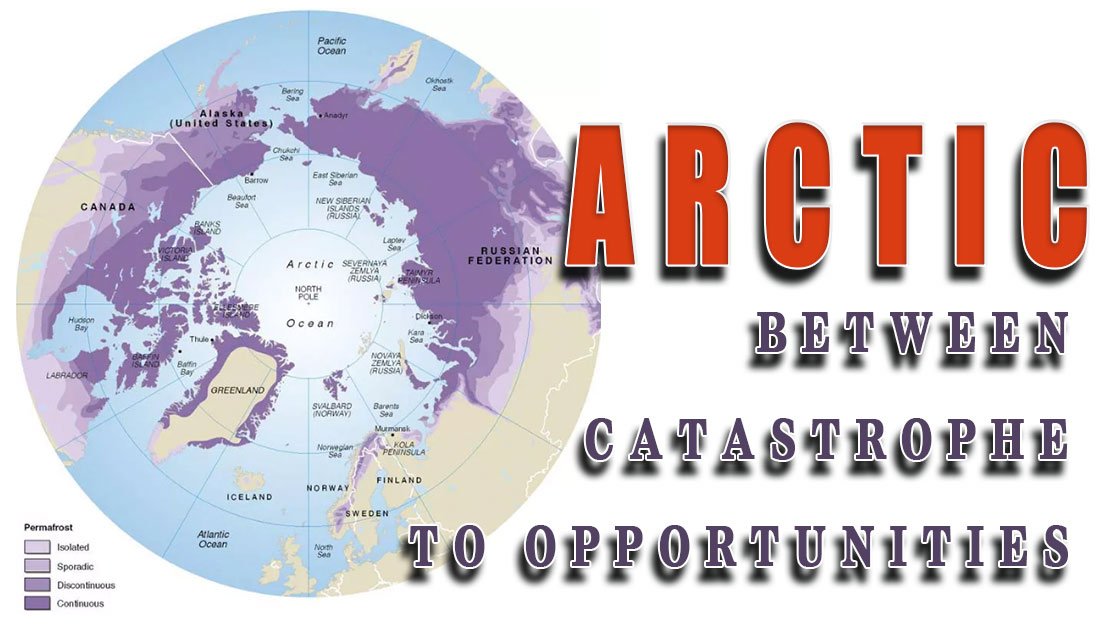The climate cataclysm looms with fast-melting Arctic ice, which stuck around the world, especially in lowlands near the sea and left thousands of innocent souls marooned and the quagmire of umpteen is beyond description.
A study of Technical University of Denmark (DTU) Space lab published in US journal described, Greenland’s melting ice caused sea levels to escalate and ensued in the vanishing of glaciers 4 times faster in 2013, than in 2003. Probably the world has never ever expected to witness this spell disaster of Arctic region in such magnitude.
But this tragedy opens up some opportunities too in front of the world. Now the first question haunts us is, were we prepared to face this or to talk turkey what went wrong and do we have proper technologies to use the opportunity?
In recent years, the melting of ice in the Greenland region has heightened by several dynamics. We can see a sustained rise in the earth’s temperature and that is the main origin of the melting down of Arctic ice. The uncontrollable global warming occurrence including the ejecting of greenhouse gases into the atmosphere is working as a core factor. Thus, warming up of oceans around the arctic region is leading to faster and longer melt seasons of polar ice caps.
Besides that, the decreasing albedo of these regions due to overthrowing of grime, black carbon, dust and other particulate matters on ice sheets are leading to faster melt of ice.
A report says, the magnitude of ice cover on the arctic has downgraded to 5.2 million square km as of September 2014 from an average of 7.2 million square km in 1979. The ice is now melting from the surface corpus and melting inland from the seashore and thus emerging rivers are streaming into the ocean to mount its level. This increasing sea level leads the way of several
fiascos and lowland flooding. Moreover, the whirlwind climate change and melting of arctic ice is the pioneer of erratic rain and wind patterns, scant food security, a threat to cities and population centers and marine and terrestrial ecological disruption. As a result, mother earth could eyewitness a dramatic degeneration in fish stocks, a 100-fold escalation in the damage caused by the superstorms and millions of people evacuated by rising seas, if we dont diminish greenhouse gas emissions. While melting in West Antarctica has shown considerate attention from scientists, especially with the 2017 break-in Larsen C ice shelf, glaciers in East Antarctica are ominous too. A draft report of IPCC concludes that even if we will cut down the greenhouse
gas emissions as maximum as possible, though by 2050, umpteen low-lying megacities and small island nations will experience extreme tragedy due to mounting sea levels every year, and by 2100, annual flood calamities are estimated to rise to 2-3 orders of degree.
If Arctic ice melting has its dares, it has good prospects too. Melting of Arctic ice will shrink the sailing distance between Asian ports and Northern Europe by almost 40%. Additionally, Arctic encloses almost 90 billion of crude oil and 1670 trillion cubic feet of natural gas and 44 billion barrels of unidentified natural gas. As India is the 4th largest energy consumer the world, the
Arctic has galore hydrocarbons to furnish to India’s energy amenities, but India doesn’t have ample technical competencies to embark on Arctic exploration. Besides these, India should clout its experience from the studies in Arctic Antarctica and the Himalayans to guide the world to frame strategies on climate change. But the opportunities have some thorns in the flesh. The
enhancement of economic activities in the Arctic region will accelerate global warming and that will lead to more debacles. Any impending change in the Arctic is going to upset the monsoon system as well. In addition to that, the commercial abuse of the Arctic resources would have an undesirable effect on the local dwellers.
Since the 1990, the world has underway discussing climate change and initiated assigning an international agreement for dealing with it together. The Paris agreement and the reports of IPCC suggest the world to clutch the increment of global average temperature to 1.5°C at any cost to avoid the irreversible effects of climate. But unfortunately the global average temperature has already risen by more than 1°C and it could cross the 1.5°C limit as early as 2040. The research found that due to the bonhomie of the higher temperature and rising sea levels especially in the Arctic; local animals are facing an ensuing danger of extinction in every
passing whisker. To call a spade a spade, sans controlling climate change with a proper strategy, the world is giving away a little less chance to experience living for the upcoming generation in the offing.The demise of umpteen innocent souls due to erratic weather change is beyond reprises.
Straightaway we should organize adherence climate change programs like Paris Climate change agreements, Kyoto Protocol, Sustainable Development Goal (Goal 13), etc. regularly to govern global warming. We should immediately implement renewable energy and green technologies
on a large scale. Vulnerable countries should employ disaster management measures across the coastlines like the Netherlands. World Organizations like the UN should encourage novel ways to carbon capture, smart agriculture and increasing afforestation. World satraps should take the onus and should be a messiah with imperative steps to make a difference.
